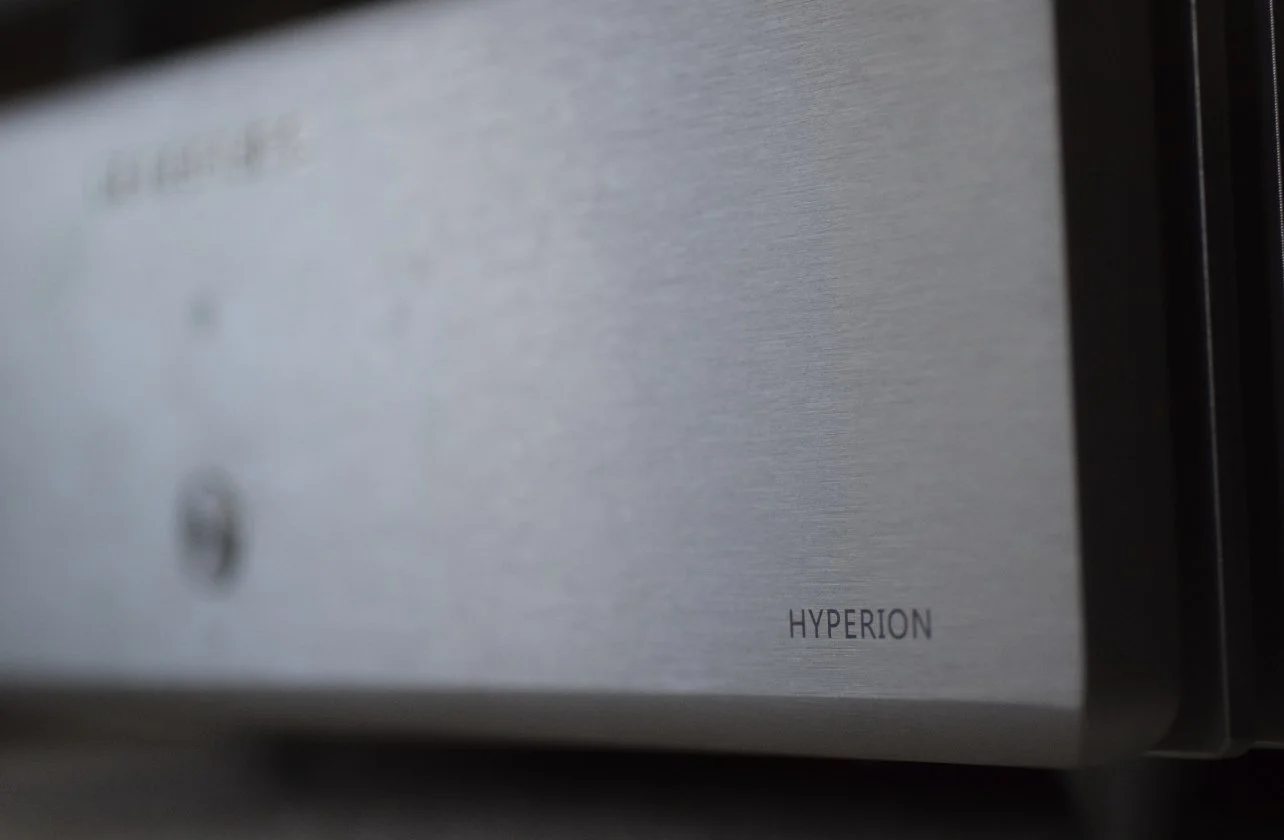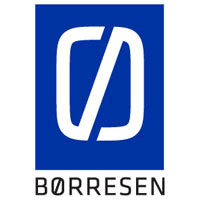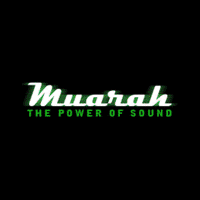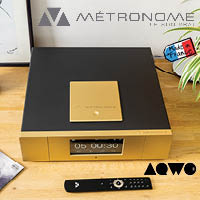Denafrips Hyperion Power Amplifier
Around these parts, Denafrips has earned a solid reputation for its R2R DACs which Audiophilia writers found to offer exceptional performance at various price points. I recently took a closer look at the brand because Denafrips is not just a digital specialist but in fact offers a line up of pre and power amplifiers.
A quick perusal of the Denafrips portfolio and it’s apparent it is a brand which applies a firm philosophy to all of their products. That philosophy includes a common design language—overbuilt casework, sleek minimal appearance and streamlined features. The internals follow suit. All components—DACs, preamps and power amps—are built around massive linear power supplies and balanced audio circuits. The Hyperion is Class A/B.
Offering no superfluous functionality whatsoever, Denafrips certainly isn’t trying to be all things to all audiophiles. No all-in-one streaming solutions, here. Each piece serves its purpose to the best of its ability according to the Denafrips approach. I don’t know of any brands out there with an approach that blends new and old school quite like Denafrips.
Also comes in black.
Denafrips differentiates itself from the crowd by its business model as well. The products are built in China and distributed worldwide by Vinshine Audio of Singapore. They are committed to the direct-from-China value proposition while also offering a three year warranty and North American service centers. The best of both worlds, minus a risk free home trial period.
Detailed reviews of Denafrips DACs are widely available, but their amplifiers haven’t received the same coverage. As such, this review is a humble attempt to provide some insight for audiophiles considering Denafrips’ entry level Hyperion power amplifier. As of publication, the MSRP is $1388.41 USD (prices are set in Singapore dollars and converted to other currencies) including free international shipping.
In order for me to determine if the Hyperion should get a slam dunk recommendation like Denafrips DACs, Alvin Chee, founder and owner of Vinshine, arranged the shipment of a demo amplifier for review. International customers will be pleased to know that Chee and his team are responsive and detailed in their technical guidance about the products, which is not always standard nowadays.
Features & Specs
Even for a power amplifier, the sheer absence of extraneous features on the Hyperion is notable. Line level signal in, speaker level signal out—it’s the quintessential purist piece. Performing the single crucial task of amplification within the Denafrips ethos means the circuit design is actually a primary feature. By that I mean the circuit design will likely attract customers the way certain convenience features might attract interest in an integrated amplifier.
The electronics inside the Hyperion are gorgeously laid out. The input section consists of a 300VA toroidal transformer mounted front and center with an array of small filter caps with a total capacitance of 147,600 uF to the rear. Power module boards are oriented vertically, running the length of the side wall heatsinks, with four transistors per channel. The input and power sections are isolated from each within the case by metal barriers.
Denafrips wants users to attain the best performance from the balanced circuitry of the Hyperion and have committed to including only balanced XLR inputs. A bug or a feature? Not a problem when using Denafrips gear upstream. Accessible preamps with balanced outputs are becoming more common on the market, but there are plenty of great RCA-only options that might be ruled out for use with the Hyperion.
Power output into 4 Ohms is conspicuously absent on the Denafrips specs page, but, elsewhere on their site, Denafrips claims the power output nearly doubles from 80 watts into 8 ohms to a robust 150 watts into 4 ohms.
Gain: 26dB
Output Power: 80w RMS per channel into 8ohms
Frequency Response: 10-80kHz(-2.2dB)
THD+N: 0.00078%
S/N Ratio: 125dB
Dynamic Range: >121dB
Stereo Crosstalk: -110dB
AC Power Requirement: 100-240VAC, 50/60Hz (Worldwide Voltage)
Power Consumption: 35W (Idle), 234W (Operational)
Dimension: 320W x 380D x 100H mm (Feet +18mm)
Weight: 16.5 Kg
Color: Black/Silver
Warranty: 36 Months
Design & Build
The exterior design of the Hyperion reflects the philosophy of the underlying electronics. It is overbuilt but with a streamlined elegance. The term ‘heirloom’ seems to be frequently applied to vintage looking or vintage inspired pieces like tube amps. Despite the modern appearance of the Hyperion, it is indeed an heirloom quality product. It feels like it’s hewn from a solid slab of aluminum. The silver review unit is stunning. I can only imagine how intense the black option looks in person.
This is the first three-footed piece of equipment I’ve had in house and I’m not in love with the concept but that’s a matter of personal taste to be sure. As my Audiophilia colleague, Michael Johnson, pointed out, if I ever wanted to outfit Denafrips gear with isolation feet I would save a few bucks.
As a nice bonus, the Hyperion actually ships with a remote, the same unit used with other Denafrips gear. Naturally it is just as overbuilt as the amp itself. Don’t drop it on your foot!
Daily Use
Setting up the Hyperion was as simple as can be, plug it in and turn it on. The unit automatically senses the mains voltage and adjusts accordingly with no user input required. Denafrips gives their electronics 100 hours of burn-in at the factory so I did not perform an elaborate burn-in procedure nor did I listen for changes early on.
I respect Denafrips’ commitment to the principle of balanced circuitry but, at least as a reviewer, it would be a nice convenience to have unbalanced inputs also. Perhaps a necessary evil, but in order to try multiple system configurations for a thorough review I occasionally used RCA to XLR adaptors with the Hyperion.
Subwoofer people, particularly the REL crowd, should note: the fully balanced amplifier does not easily accommodate speaker level subwoofer integration. Vinshine recommends contacting them directly about incorporating a speaker level subwoofer.
The Hyperion has an auto protect mode and I can confirm it works well and is quite sensitive. I accidentally shorted a speaker cable while the amp was powered on and the minuscule contact shut it down instantly. After letting the unit sit for an indeterminate amount of time it got right back to business.
Review System
The speakers I paired with the Hyperion were the detailed and resolving Focal Aria K2 936 and my warm and lovable Wharfedale Diamond 10.2. The pre-out of the Cambridge EVO 150 was extensively utilized for convenient comparisons. I also fed the Hyperion with the new Denafrips Hades preamplifier (Audiophilia review coming soon).
Associated Equipment
Digital Sources: Yamaha DVD-S1700, Schiit Audio Modi DAC, Xiang Sheng DAC-01A, Macbook Air (AmazonHD via USB), iPad (Spotify, AmazonHD via Airplay)
Analog Source: Pro-Ject Debut Carbon, Ortofon 2M Red, iFi ZEN Phono
Amplification: Parasound P/LD-1100, Parasound HCA-750A, Cambridge EVO 150, Denafrips Hades
Speakers: Wharfedale Diamond 10.2, Focal Aria K2 936
My setup. A gorgeous Allnic Audio ZL-3000 Power Cable on duty. My Audiophilia review of the cable forthcoming.
Listening
It was a joy to discover that many of Columbia’s Miles Davis ‘complete sessions’ box sets, long out of print, are now available on streaming services. I took advantage to rediscover In A Silent Way (Columbia, 1969), which I hadn’t given a proper listen to in over a decade. At only three compact discs long it’s one of the more approachable Miles Davis box sets.
The tracks have spacious mixes, so it's easy to locate the players on a properly set up system. Great for evaluating soundstage and imaging. As expected from a purist power amplifier, I detected minimal influence in this area from the Hyperion ($1388.41 USD). To be sure, these are some relatively easy recordings. A warm up so to speak. And the Hyperion made a fine first impression by not imposing itself upon the music much at all. This became a theme during my time with the Hyperion. On easy recordings or at low to moderate volumes in general it was mostly invisible.
I am fortunate that my local record store has a small but respectable classical section. Almost everything is five dollars, so I make it a habit to grab one classical LP everytime I make a pricier, non-classical purchase. With a helpful nudge from my Audiophilia colleagues I grabbed a disc of Wilhelm Kempff playing Beethoven Sonatas (Klaviersonaten »Der Sturm« / »Les Adieux« / Nr. 28 A-dur, Op. 101, Deutsche Grammophon, 1965). It’s a beautifully played and recorded piano set which I used for examining the timbre and microdynamic performance of the Hyperion.
Again, I found that the Hyperion didn’t leave its fingerprints all over the place. Only when really opening up the volume dial was I able to detect small differences. Rich detail came through and along with that came a touch of sweetness and roundness. I wouldn’t go so far as to call it polite, but refined.
One of my toture tests for the Hyperion (and for my wife) was doom metal trio Sleep’s triumphant 2018 comeback album, The Sciences (Third Man). It’s a megalith of a record with a ton of low frequency information—distorted, downtuned guitars, bass and heavy effects like thunder. Perfect for rocking out and cleaning the house. Even more perfect for evaluating how an amp manhandles some woofers. The Hyperion did Sleep justice. There was plenty of weight to the bottom end without getting sloppy. I was worried about too much midbass fuzz with the Wharfedale Diamonds and the Hyperion full bodied delivery almost but not quite too much of a good thing. The Hyperion delivered the goods without missing the details buried in the smoke.
My review unit in silver.
How does the Hyperion deliver the power? This is my favorite part. Day to day it’s all class and charm but when opening the throttle, the Hyperion unleashes current with confidence and control. While it’s not the fastest, leanest amp it can get up and go. Like a classy German V12 vs. unhinged American V8.
The Hyperion doesn’t jump out and assert itself in an immediate way. When it does make itself known it does so in a dignified manner. For context, it’s presentation sat right in between the two other amps I had on hand for comparison. Compared to the Cambridge EVO 150, rated at almost double the wattage, the Hyperion sounded similar at low or moderate volume. At higher volumes the Denafrips was a touch warmer in the bass, smoother in the midrange and silkier in the highs. This occasionally came at the expense of some soundstage dimensionality. My Parasound HCA-750A brought plenty of that old school Class A/B grit and liveliness but couldn’t compete with the Hyperion in terms of micro details. This becomes a matter of taste and equipment matching which leads me to thoughts on the speaker pairings I had available.
The soundstaging ability of the Focal Aria K2 936 kept things three dimensional when driven by the Hyperion. The tight bass response also proved a good match. The Aria’s gnarly impedance curve was no sweat for the Hyperion. With my Wharfedale Diamonds I preferred the more balanced Cambridge EVO 150, but this is because the Diamonds are a little loose in the midbass but more importantly, the Hyperion deserves higher-end company. Don’t rely on its sticker price as a benchmark. This is an amp meant to play with big league speakers. Just look for speakers with clean, responsive bass and avoid overly analytical or overly warm timbre. In terms of sensitivity, shoot for around 87 dB or greater unless you have a small room.
Conclusion
The Hyperion ($1388.41 USD) is a damn fine power amplifier. It has an agreeable sound, solid power delivery and build quality that puts competitors to shame. I honestly don’t know how it can be manufactured and shipped to North America for its retail price. In the right system it can offer incredible value. But because orders from Vinshine are essentially final sale, extra consideration is warranted. First, with regard to functionality, the Hyperion should ideally be paired with a balanced preamplifier. Second, speaker level subwoofer integration should be ruled out. Finally, the Hyperion will pay the greatest sonic dividend when paired with higher-end speakers. So, it may not be the best first amplifier recommendation for those with entry or mid level speakers, but, for many, the Hyperion could easily be a final amplifier.






























